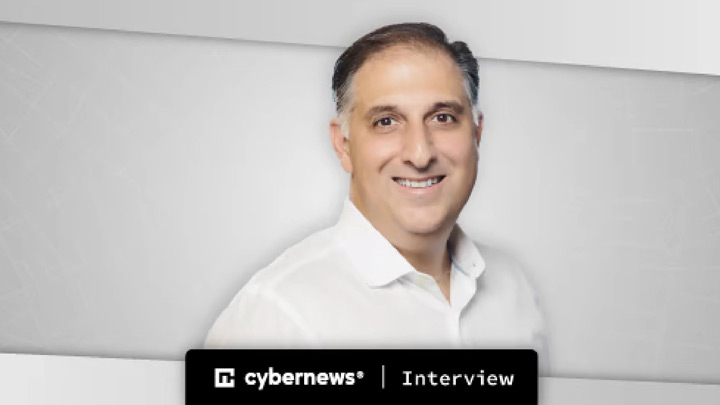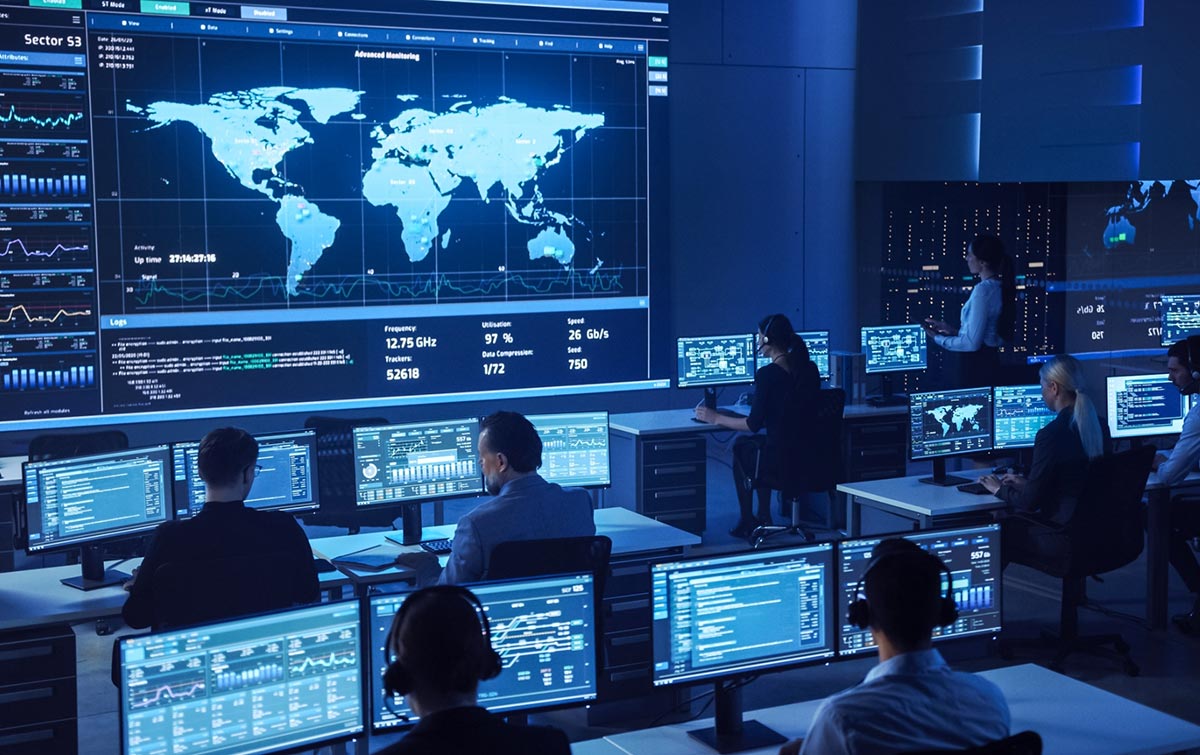Global unrest is an excellent opportunity for cybercriminals to exploit businesses, creating a need for more protection measures from fraudsters.
Many people are familiar with the urgent emails in their spam folders – one of the most popular fraud methods. While some easily identify and ignore it, urgency makes others do actions without putting much thought into it. This can put the whole company at risk.
When falling victim to a fraudster’s hands, a password manager or a VPN service will not be enough to protect you. Such data theft prevention requires awareness and advanced fraud protection and prevention tools.
Armen Najarian, the CMO and Chief Identity Officer at Outseer – a company that specializes in fighting fraud, agreed to discuss such cyberattacks and their prevention methods.
Let’s go back to the very beginning of Outseer. What was your journey like throughout the years?
RSA, a leading cybersecurity solution, launched Outseer in June 2021 to authenticate identities, protect users, and prevent fraud. We offer a full suite of anti-fraud and threat intelligence services. By utilizing science, data, and expertise, Outseer focuses on delivering superior customer experiences and comprehensive risk management. In a short time, we have been able to provide security solutions that result in fewer false positives, happier customers, and lower operational costs with no compromise in quality.
As for my fraud prevention and cybersecurity journey, I began my career in this space as Chief Marketing Officer at ThreatMetrix. A couple of years later, I took on the role of Chief Marketing and Identity Officer at Agari where I was able to gain some real first-hand experience with how these criminal rings operate. During my time at Agari, my team and I discovered a Nigerian fraud group called Scattered Canary, which was filing fraudulent unemployment claims, receiving benefits from multiple states, and receiving payoffs.
Ultimately, this experience is what drew me into the role at Outseer. I understand the important work our team is doing with fraud protection and monitoring as more and more transactions take place online. Since I started at Outseer, our mission has always been to provide reliable foresight on identity authentication and fraud prevention.
Can you tell us a little bit about what you do? What are the main issues you help solve?
Outseer focuses on monitoring the fraud landscape to stay on top of the latest methods being deployed by cybercriminals. Some different types of fraud we look for include rogue mobile apps, phishing, impersonation, and brand abuse. We also work with companies to authenticate customer identities to ensure a person is using legitimate payment credentials that belong to them to purchase goods and services.
We offer a selection of solutions for companies to help combat various types of fraud. Our current offerings include Outseer 3-D Secure, Outseer Fraud Manager, Outseer FraudAction, and Outseer Emerging Payments. Each targets a different kind of protection, allowing companies to take a holistic approach to their network security and fraud prevention.
What technology do you use to secure payments without compromising the user experience?
Outseer uses 3-D Secure to help companies protect customers’ information during online transactions while providing a smooth customer experience. 3-D Secure authenticates users’ identities and protects their information, which increases transaction approvals, making the payments process faster, seamless, and more efficient. Additionally, user identities are verified at various points during transactions making it more accurate. 3D Secure protects various forms of payment, from traditional credit cards to newer methods like CNP and BNPL.
Outseer Fraud Manager monitors digital transactions to detect fraud, assess users’ risk factors, and deliver fraud detection trends. In addition, Fraud Manager warns users of potential fraud situations before they happen.
Outseer Fraud Action is an around-the-clock fraud and cybersecurity monitoring service that stops cyberattacks and detects fraudulent activity. Specifically, Fraud Action protects businesses from phishing attacks, malware, rogue mobile apps, impersonators, and fake social media accounts.
Outseer’s newest addition, Outseer Emerging Payments, was launched to combat fraud for new payment technologies. Buy Now, Pay Later Installments is the first solution offered under this product line.
Did you notice any new fraud techniques arise as a result of the recent global events?
The evolving Russia/Ukraine conflict has drastically influenced the fraud landscape, forcing companies to develop new techniques to combat cybersecurity challenges. From increased phishing and cybersecurity attacks to fake fundraising and hacking attempts, fraudsters are looking to capitalize on the mounting international tensions.
The global conflict wasn’t the only factor contributing to a rise in new fraud techniques. With the pandemic also came a wave of touchless technology and payments – one being QR codes. Many restaurants started using QR codes to encourage touchless interactions, but like any card-not-present transaction, there is an opportunity for fraud. Scanning QR codes for menus and payments opens up a new avenue for fraudsters to access private information. It’s hard to verify if a QR code is legit or if a fraudster replaced it to misdirect and scam customers.
Another factor is the significant influx of new payment technologies that have hit the market. An example is the “buy now pay later” (BNPL) trend that is currently taking the payment world by storm. Since BNPL transactions are still relatively new and there are multiple parties involved, there is an increased opportunity for fraudsters to take advantage of consumers’ vulnerabilities.
At Outseer, we work on staying on top of these global trends to combat these new forms of fraud while educating users about these risks.
What red flags indicate that a user might be malicious or someone is impersonating them?
Impersonators, fraudsters, and other malicious users are becoming more and more sophisticated in their approach to stealing consumers’ information and creating false accounts. Unfortunately, this makes it harder for people to recognize the signs that they are being scammed.
A common method bad actors use to trick people and collect personal information is impersonating someone close to you. You can prevent yourself from falling victim to this scam by keeping an eye out for these warning signs:
- Different Communication Methods. If the person contacting you usually uses a particular form of communication (i.e. text) but is reaching out via a different one (i.e. email), that is a red flag.
- Unknown Number. If a person is reaching out with a ‘new number,’ be sure to always take it with a grain of salt. A great way to authenticate their identity in this case is to get them on a phone call and see if you recognize their voice.
- Highly Urgent Requests. If you receive a suspicious email or text that says it requires immediate action (i.e. I need this money by today…), be sure to take a step back and really assess the situation. Fraudsters often try to rush victims into making rash decisions so they don’t feel like they have time to think it through.
Overall, use your best judgment. If there are any alarm bells going off in your head, there is often a good reason – be sure to always take a step back and investigate.
What cybersecurity risks do you think new business owners often fail to take into account?
Business owners often fail to consider the risks they are putting themselves and customers at when collecting and storing sensitive personal and financial information online. Cybersecurity and fraud prevention should be considered from the start and baked into the foundation of their network. It’s essential that they invest in security options that will protect their information as well as customers.
It’s also important to note that securing your network is an ever-evolving process, not a one-time investment. In order to have effective cybersecurity, businesses have to remain committed to updating their systems to ensure the network is able to defend against fraudsters’ new methods and techniques.
In your opinion, which organizations are attractive targets for fraudsters and should implement proper security measures as soon as possible?
Any organization that collects any amount of users’ personal information could be a target for fraudsters. Fraudsters can use as little as an email to commit fraudulent acts or build your profile on the dark web.
State databases are one of the hottest targets for fraudsters since they often hold a plethora of people’s sensitive information and are often on outdated servers. Most times, these databases are behind on security updates and modern technology, exposing them to vulnerabilities that hackers can (and will) take advantage of.
In general, all organizations that collect any sort of information from customers need to make sure they are investing in and implementing the proper security measures as soon as possible, for their and users’ protection.
Talking about average Internet users, what measures and practices do you think everyone should adopt to protect their identity online?
As the digital world continues to grow, more and more sensitive information is being stored online. With the majority of transactions taking place digitally, it’s not a surprise that criminals are committing fraud at astounding levels. While we have enjoyed the flexibilities this age of digital transformation has brought us, it’s essential to recognize the vulnerabilities that have been introduced, too.
It is important to remember that oftentimes, fraudsters operate in groups to execute scams and attacks. Rarely is it a singular data breach, hack, or scam responsible for your leaked information and financial losses – it is rather multiple hacks that held various pieces of your information that were used to build a profile on you on the dark web.
A few things Outseer urges people to do is to protect themselves from fraudsters by updating passwords regularly, using varying passwords between different sites, making sure to check financial statements to monitor for unknown purchases and fraudulent activity, as well as making sure to research payment methods you are unfamiliar with before signing up.
And finally, what’s next for Outseer?
With numerous types of emerging payment methods and technology trends shaping the world, including BNPL, Cryptocurrency, and more, Outseer is working to evaluate the security risks of each new method to stay ahead of fraudsters and stop scams before irreversible damage is done.
Outseer is addressing these new methods and rising fraud trends while maintaining and updating current products to reflect changes in the evolving fraud and cybersecurity landscape. We recently announced the development of our Buy Now Pay Later solution – a product under our new Outseer Emerging Payments solution that authenticates users’ identities at multiple points in the BNPL process to prevent fraud before it happens. We are excited to continue expanding our offerings to stop fraud in its tracks across all avenues.















